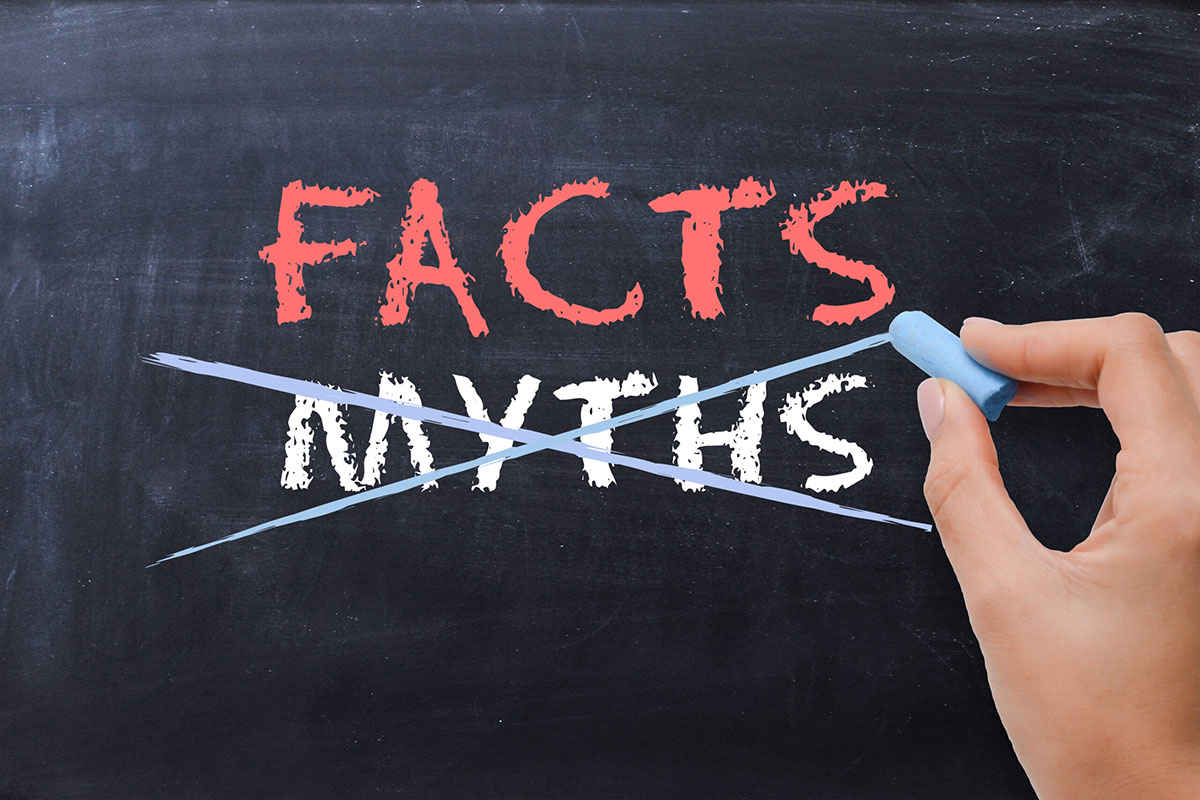Like masturbation itself, pornography has been a frequent scapegoat for a wide variety of social, sexual and cultural ills. Just as people were once warned that masturbation would make you go blind, or lead to erectile dysfunction or insanity, antiporn activists have more recently attempted to graft dubious and unsubstantiated health warnings onto the consumption of adult content.
Beginning in Utah in 2016, faith-based antiporn activists drafted and advanced a resolution declaring pornography to be a “public health crisis.” Despite an utter lack of support from doctors, researchers or major medical institutions — the Salt Lake Department of Health publicly disavowed the resolution — more than a dozen states quickly adopted similar bills. While passed as non-binding, states soon began using the resolutions themselves as evidence of a problem, and drafted legislation to restrict, censor or punish those who distribute adult content. In 2023, Texas began requiring adult sites to carry a warning listing these “harms” on their websites.1
But there remains little or no reliable evidence to support the claims of addiction, mental illness, erectile dysfunction, child abuse or sex trafficking detailed in the resolution and subsequent laws that cite it.
As Kimberly Nelson and Emily Rothman concluded in the American Journal of Public Health, “the movement to declare pornography a public health crisis is rooted in an ideology that is antithetical to many core values of public health promotion and is a political stunt … Consuming pornographic material does not directly lead to health problems, infectious disease morbidity, property destruction, or population displacement. Research suggests that there may be adverse health consequences of pornography use for some, no substantial consequences for the majority, and positive effects for others.” 2
Myth 1: Is pornography addictive?
Pornography really does, unlike other addictions, biologically cause direct release of the most perfect addictive substance … That is, it causes masturbation, which causes release of the naturally occurring opioids. It does what heroin can’t do, in effect.” — Jeffrey Satinover, US Senate Hearing
Is porn addictive?
Not according to science.
While any activity, from exercise and eating to shopping and sex, can be done compulsively, there’s nothing unique to porn that causes biological addiction, nor is there anything specific to pornography as opposed to, say, masturbation.
Dopamine is an important neurotransmitter in the brain’s reward system, released when people have positive experiences such as eating chocolate or having sex, telling their brains that they should keep doing it. How well an individual is able to regulate their response to the dopamine-reward system is determined largely by psycho-social circumstances and neural plasticity. While the brain can release dopamine when exposed to pornography, it’s similar to that of eating chocolate or beating a level in a video game.
Colloquially, “porn addiction” is used to describe obsessive, compulsive viewing of pornographic material or other visual sexual stimuli for the purpose of sexual pleasure. Studies show that more frequently than not, distress related to compulsive porn viewing is connected to self-perception of one’s own porn use, rather than the porn use itself. In other words, we see that people who classify themselves as “addicted” do not, on average, watch more porn than others.3
Studies also show that there is a connection between shame or embarrassment around masturbation and a self-perception of compulsion and addiction. In other words, if you view masturbation as a normal part of human sexuality, you’re unlikely to view yourself as addicted. We also see clear links between perceived pornography addiction and shame related to culture and religiosity as major causes of distress.3 4
People can compulsively play video games, shop, eat or watch pornography as a result of anxiety, depression, procrastination, boredom or any number of other reasons. This does not mean we should legislate against adult’s access to consensual adult content, any more than we should legislate against access to the internet.
Much research on pornography “addiction” lacks conclusiveness as a result of poor experimental design and assumptions made based on the Addiction Model.5 The Diagnostic and Statistical Manual of Mental Disorders (DSM-5), which classifies all known pathologies surrounding recognized mental health conditions, does not include Porn Addiction as a recognized medical disorder. This position is supported by various global health organizations, including American Psychological Association, World Health Organization,6 and the American Association of Sexuality Educators, Counselors and Therapists (AASECT), which is the United States’ professional sexualities credentialing body.7
Myth 2: Does early exposure to pornography negatively affect brain development?
“When your brain’s reward center triggers the release of dopamine and related chemicals, it also releases a protein that serves as a “reinforcer.” In effect, it creates neural pathways to connect what someone is doing to how they feel—in this case, strongly connecting pleasure to the act of watching pornography. This connection in turn results in greater demand for the activity, making it more and more likely that one returns to porn.” — from the website of Canopy, a porn blocking software
Does porn negatively impact your brain?
Not really. Brain development varies greatly from person to person, mostly because of differences in brain chemistry (namely dopamine and neural plasticity) along with a variety of other factors.
Neural plasticity (or brain malleability, the ability to learn and unlearn) in adolescents “plays a critical role in shaping cognitive and behavioral developmental processes across childhood and beyond.”8 In specific circumstances of neural plasticity, compulsive pornography viewing may correlate with compulsive or associative behaviors where circumstances allow learning that behaviors create rewards in the brain– but this is not the experience of the majority of porn consumers. This learning is not always negative, and when paired with medically accurate and culturally appropriate education, can be part of normal brain development.9
In short, our brains are always growing and changing, in response to positive or negative stimuli. Viewing porn is not physiologically unique from the wide variety of stimuli that shape us, including our sexual experiences, our time spent online or the vast amount of non-porn mainstream media we consume.
Policy Suggestions:
- Decrease reliance on the Addiction Model to describe and pathologize behaviors that are have a moral stigma
- Increase access to non-pornographic alternatives for (especially) boys and men to engage in learning about healthy sexual behaviors and relationships
- Increase access to safe sex education materials and require school districts to set policies on access to medically accurate sexuality education
See also:
Homophobia and Religiosity Drive Struggles with Porn (Psychology Today)
We know that “NoFap” is Misleading Men About Masturbation. It might be more dangerous than that (Slate)
What have we learned from 50 years of studying porn? (The Guardian)
Is Pornography Addictive? (American Psychological Society)
1. Khazan, Olga. “Https://Www.Theatlantic.Com/Politics/Archive/2021/06/Can-You-Be-Addicted-Porn/619040/.” The Atlantic, June 20, 2021.
2. Nelson, Kimberly M. and Emily F. Rothman. “Should Public Health Professionals Consider Pornography a Public Health Crisis?” Am J Public Health, no. 110 (2020):151-153. doi: 10.2105/AJPH.2019.305498.
3. Grubbs, Joshua B., Nicholas Stauner, Julie J. Exline, Kenneth I. Pargament and Matthew J. Lindberg. “Perceived addiction to Internet pornography and psychological distress: Examining relationships concurrently and over time.” Psychology of Addictive Behaviors, no. 29 (2015): 1056–1067. https://doi.org/10.1037/adb0000114
4 Grubbs, Joshua B. and Samuel L. Perry. “Moral Incongruence and Pornography Use: A Critical Review and Integration” The Journal of Sex Research, no. 56 (2019): 29-37. DOI: 10.1080/00224499.2018.1427204
5 Grubbs, Joshua B. and Samuel L. Perry. “Moral Incongruence and Pornography Use: A Critical Review and Integration” The Journal of Sex Research, no. 56 (2019): 29-37. DOI: 10.1080/00224499.2018.1427204
6Phillips, Bonnie, Raju Hajela and Donald L. Hilton JR. “Sex Addiction as a Disease: Evidence for Assessment, Diagnosis, and Response to Critics” Sexual Addiction & Compulsivity: The Journal of Treatment & Prevention, no. 22 (2015): 167-192, DOI: 10.1080/10720162.2015.1036184
7American Association of Sexuality Educators, Counselors and Therapists. “AASECT Position on Sex Addiction.” Retrieved December 2023 from https://www.aasect.org/position-sex-addiction#:~:text=Therefore%2C%20it%20is%20the%20position,education%20delivery%2C%20counseling%20or%20therapy.
8. Fandakova, Yana and Catherine A. Hartley. “Mechanisms of learning and plasticity in childhood and adolescence.” Dev Cogn Neuroscience, no. 42 (2020):100764. doi: 10.1016/j.dcn.2020.100764.
9. Malamuth, Neil and Mark Huppin. “Pornography and teenagers: the importance of individual differences.” Adolesc Med Clin., no. 16 (2005):315-326. doi: 10.1016/j.admecli.2005.02.004.
Let us know how you’re using the information. Just drop us a note at [email protected] and share your experience.
P.S. Don’t forget to credit Fact Checked by Woodhull when citing this work.

